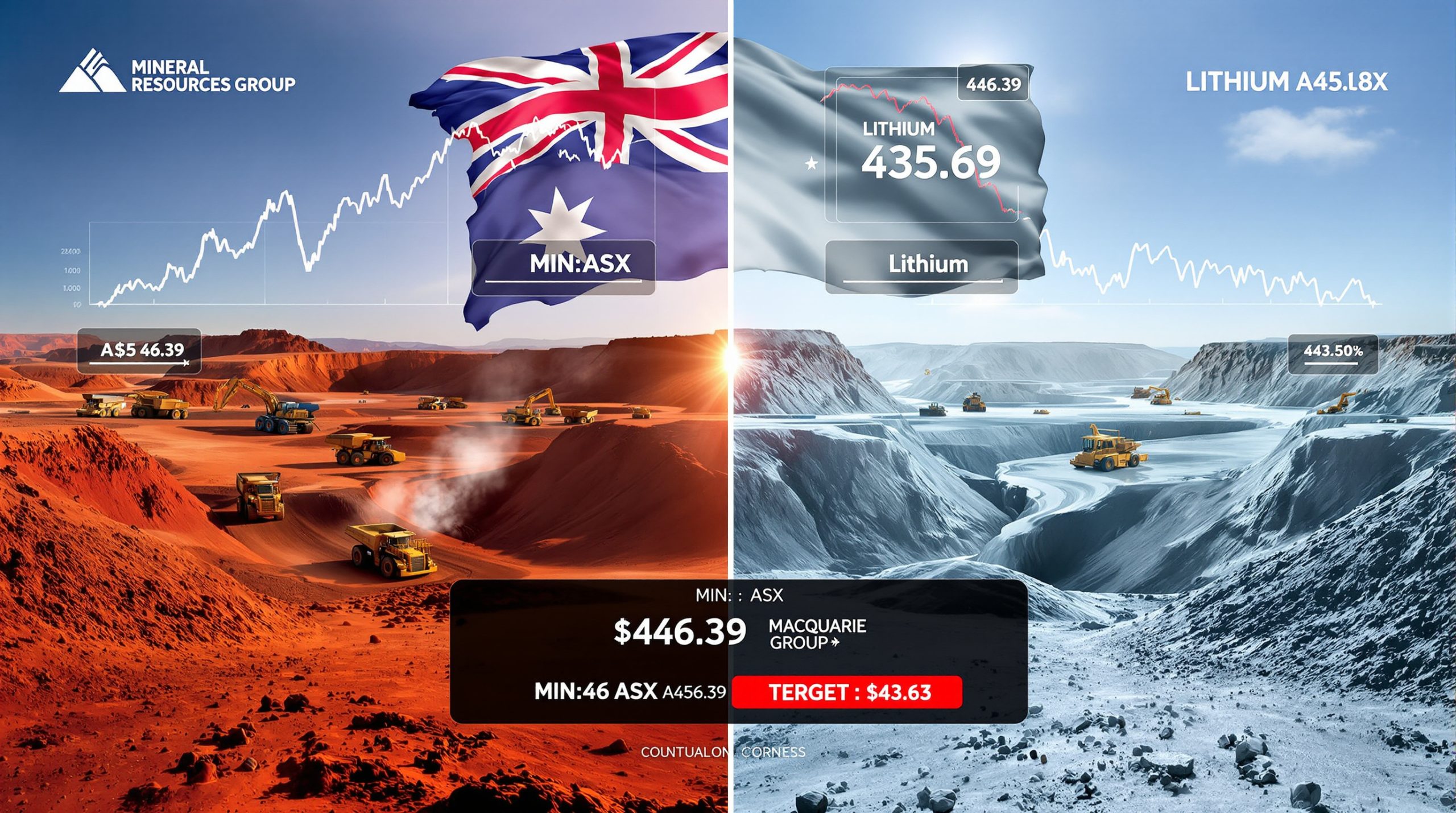Gold as a Comfort Metal: Understanding the Psychological and Economic Appeal
In times of uncertainty, investors and individuals alike have historically turned to gold as a refuge—a tangible asset that offers both psychological and financial security. This phenomenon isn't merely coincidental but rather the result of gold's unique properties and its centuries-long track record as a store of value. The concept of gold as a "comfort metal" encompasses both rational economic considerations and deep-seated psychological factors that continue to drive demand in today's complex financial landscape.
The Psychological Foundation of Gold's Comfort Appeal
Gold's physical properties—its lustrous appearance, resistance to corrosion, and remarkable durability—mirror the psychological comfort it provides. As one of the least reactive chemical elements, gold remains virtually unchanged over centuries, creating a powerful metaphor for stability in an otherwise volatile world. This permanence resonates deeply with human psychology, particularly during periods of heightened uncertainty.
The World Gold Council notes that gold's role as a "safe haven" stems from its unique combination of attributes: high liquidity, absence of credit risk, limited supply, and historical value preservation. These characteristics create a foundation of trust that few other assets can match.
Historical Context of Gold as a Safe Haven
Throughout human history, gold has maintained its value across diverse civilizations and economic systems. From ancient Egypt to imperial China, and from the Roman Empire to modern financial markets, gold has consistently served as a sanctuary during periods of crisis.
The London Bullion Market Association (LBMA) research shows that gold's psychological appeal is deeply rooted in its 5,000-year history as a universal store of value. This historical continuity provides a powerful reassurance that transcends cultural and geographical boundaries, reinforcing its status as the ultimate comfort metal.
How Does Gold Perform During Economic Uncertainty?
During periods of economic turbulence, gold often demonstrates its value as a portfolio stabilizer. While no asset provides perfect protection against all types of market stress, gold's performance during historical crises reveals patterns that help explain its enduring appeal as a comfort asset.
Gold's Price Behavior During Market Downturns
Gold typically exhibits counter-cyclical performance during significant market corrections. During the 2008 financial crisis, gold prices rose approximately 25% (from $869 to $1,087 per ounce) while the S&P 500 fell 38.5%. This negative correlation becomes particularly valuable during severe market stress.
Similarly, during the COVID-19 market crash in early 2020, gold initially fell 12% alongside other assets in a liquidity crunch, but quickly recovered and reached record-high inflation hedge later that year, rising 24.6% for 2020 while markets remained volatile.
This pattern of initial weakness followed by strong recovery during prolonged crises demonstrates gold's resilience as a comfort asset, even if it doesn't provide immediate protection during panic selling.
Correlation Between Gold and Traditional Financial Assets
Gold's negative correlation with stocks and bonds during extreme market stress makes it particularly valuable for portfolio diversification:
| Market Condition | Gold Performance | Stock Market Performance | Correlation |
|---|---|---|---|
| Severe Market Downturns | Often Positive | Negative | Strongly Negative |
| Moderate Volatility | Mixed | Mixed | Weakly Negative |
| Stable Growth Periods | Often Underperforms | Positive | Neutral to Positive |
According to research from the Bank for International Settlements, gold's correlation with equities during normal market conditions hovers near zero. However, during extreme market stress (defined as the worst 5% of trading days), the correlation becomes significantly negative, typically ranging from -0.25 to -0.35, providing meaningful diversification benefits.
Central Bank Gold Reserves as Stability Indicators
Central banks worldwide have been net buyers of gold since 2010, with purchases accelerating in recent years. According to the World Gold Council, central banks purchased 1,037 tonnes of gold in 2023, the second-highest annual total on record, followed by an estimated 1,045 tonnes in 2024.
This institutional confidence in gold reinforces its status as a comfort metal at the highest levels of financial governance. The International Monetary Fund reports that as of Q4 2024, global central bank gold reserves totaled approximately 36,700 tonnes, representing roughly 17% of all above-ground gold stocks.
Key buyers include China, Russia, Turkey, and India—nations seeking to reduce dependence on the US dollar as a reserve asset while increasing financial sovereignty.
What Drives Investors to Seek Comfort in Gold?
Understanding why investors turn to gold during uncertain times requires examining both economic factors and psychological motivations. This multifaceted appeal explains why gold remains relevant in modern portfolios despite offering no yield.
Inflation Protection and Wealth Preservation
Gold has historically maintained its purchasing power over long time horizons, making it an effective hedge against currency devaluation and inflation. When paper currencies lose value, gold often appreciates in relative terms, preserving wealth across generations.
According to World Gold Council research analyzing data from 1971-2023, gold has maintained an average annual return of 10.6% during periods when inflation exceeded 3%, outperforming most asset classes. A study by economists Claude Erb and Campbell Harvey found that gold has maintained remarkably consistent purchasing power over very long periods—one ounce of gold in 1920 had roughly the same purchasing power as one ounce in 2020.
This attribute becomes particularly valuable during inflationary periods when traditional fixed-income investments struggle to maintain real returns.
Geopolitical Risk Mitigation Through Gold Allocation
During periods of heightened geopolitical tension, gold typically experiences increased demand as investors seek assets that exist outside the traditional financial system. Bloomberg analysis indicates that gold prices historically rise by an average of 5-7% during the first month of major geopolitical conflicts or crises.
Gold's lack of counterparty risk makes it particularly valuable during systemic financial crises, as it cannot default or be devalued by a single entity's actions. This independence from government control and financial system vulnerabilities represents a key aspect of gold's comfort appeal.
Psychological Factors in Gold Investment Decisions
The decision to invest in gold often involves both rational analysis and emotional factors:
- Tangibility: The physical nature of gold provides a sense of security that digital assets cannot match
- Legacy value: Gold's historical significance creates confidence in its future relevance
- Cultural significance: Many societies associate gold with prosperity and security
- Independence: Gold operates outside the control of any single government or institution
Academic research published in the Journal of Banking & Finance found that cultural factors significantly influence gold investment behavior, with societies that historically valued gold (such as India, China, and Middle Eastern countries) maintaining higher per-capita gold holdings.
How Does Gold Compare to Other "Safe Haven" Assets?
While gold is perhaps the most recognized safe haven asset, investors have several options when seeking portfolio protection. Understanding gold's relative strengths and weaknesses compared to alternatives helps optimize allocation decisions.
Gold vs. Government Bonds as Safety Assets
While both gold and government bonds are considered safe havens, they serve different functions in a portfolio:
| Characteristic | Gold | Government Bonds |
|---|---|---|
| Income Generation | None | Yields interest |
| Inflation Protection | Strong | Weak to Moderate |
| Counterparty Risk | Minimal | Depends on issuing government |
| Liquidity | High | High for major issuers |
| Performance During Currency Crises | Often Strong | Variable |
According to analysis by JPMorgan Asset Management, gold and US Treasury bonds serve complementary rather than competitive roles in a portfolio. Bonds typically provide income and perform well during deflationary recessions, while gold excels during inflationary periods and currency debasement concerns.
During the March 2020 market crash, 10-year US Treasury yields fell from 1.92% (January 2020) to 0.54% (August 2020), while gold rose 24.6% for the year. However, in 2022 when inflation surged, Treasury bonds lost approximately 12-13% while gold declined only 0.3%, demonstrating its relative resilience during inflationary periods.
Digital Gold vs. Physical Gold: Comfort Differences
The emergence of gold-backed digital assets has created new ways to gain gold exposure, though these alternatives may not provide the same psychological comfort as physical gold:
- Physical gold offers tangible reassurance but requires secure storage
- Digital gold solutions provide convenience but introduce technological and counterparty risks
- Gold mining stocks offer leverage to gold prices but with additional company-specific risks
The global gold market performance has daily trading volume exceeding $145 billion across all venues (spot, futures, ETFs), comparable to mid-cap equity markets, providing excellent liquidity for most investors regardless of their preferred access method.
Real Estate and Gold: Comparing Tangible Assets
Both gold and real estate provide comfort through tangibility, but they differ significantly in their practical applications and investment characteristics:
- Real estate generates income and utility but requires active management
- Gold offers superior liquidity and divisibility without ongoing maintenance costs
- Both can serve as inflation hedges, though through different mechanisms
While real estate can provide rental income and tax advantages, gold's simplicity, portability, and divisibility make it accessible to a broader range of investors seeking comfort during uncertain times.
When Has Gold Failed to Provide Comfort to Investors?
Despite its reputation as a safe haven, gold is not immune to price volatility and has experienced significant drawdowns. Understanding these limitations is essential for realistic expectations.
Historical Periods of Gold Underperformance
Gold has experienced several extended bear markets:
-
2011-2015 bear market: Gold prices peaked at $1,920 per ounce in September 2011 and fell to $1,050 by December 2015, representing a 45.3% decline. This occurred during a period of strengthening US dollar and rising real interest rates.
-
1980-2001 secular bear market: After peaking at $850 in January 1980, gold fell to $255 by February 2001, a 70% decline in nominal terms and even larger in real (inflation-adjusted) terms.
-
March 2020 liquidity crisis: During the initial COVID-19 panic selling (March 9-19, 2020), gold fell 12% alongside equities as investors liquidated all assets to raise cash, demonstrating that gold is not immune to forced selling during extreme liquidity crunches.
Factors That Diminish Gold's Safe-Haven Status
Several conditions can reduce gold's effectiveness as a comfort asset:
-
Rising real interest rates: The Federal Reserve Bank of New York found that gold performs poorly during periods of rapidly rising real interest rates (nominal rates rising faster than inflation), as this increases the opportunity cost of holding non-yielding assets. From 2021-2022, when real rates rose sharply, gold was essentially flat despite high inflation.
-
Deflationary environments: During severe deflation, cash and high-quality bonds may outperform gold as purchasing power increases automatically while financial stress drives demand for the highest-quality fixed income assets.
-
Liquidity crises: State Street Global Advisors analysis shows that gold's correlation with other assets increases during extreme liquidity crises when margin calls force indiscriminate selling across all asset classes, temporarily reducing its diversification benefits.
Managing Expectations for Gold's Protective Capabilities
Understanding gold's limitations is essential for investors seeking comfort in the metal:
- Gold should be viewed as insurance rather than a growth asset
- Appropriate allocation sizes (typically 5-10% of a portfolio) help balance protection with performance
- Long-term perspective is crucial, as gold's protective value may not be apparent in short timeframes
The World Gold Council's research on real interest rates shows a strong inverse relationship between gold prices and US real interest rates (10-year TIPS yields). A 1% increase in real yields historically corresponds to approximately a 7-8% decrease in gold prices over 12 months, providing a useful framework for adjusting expectations.
How Are Gold Investment Trends Evolving in Today's Market?
The ways investors access gold continue to evolve, with important implications for how the metal functions as a comfort asset across different market segments.
Retail vs. Institutional Approaches to Gold
The comfort that gold provides manifests differently across investor types:
- Retail investors often prefer physical gold in the form of coins or small bars
- Institutional investors typically gain exposure through futures, ETFs, or allocated storage
- Family offices increasingly blend approaches, holding both physical and financial gold assets
According to World Gold Council data, retail gold investment (bars and coins) totaled 1,176 tonnes in 2024, while institutional flows through ETFs were mixed with regional variations. This bifurcation highlights different comfort priorities—physical ownership for retail investors versus efficient implementation for institutions.
Gold ETFs and Their Impact on Accessibility
Gold exchange-traded funds have democratized access to gold as a comfort metal:
- As of December 2024, global gold ETF holdings totaled approximately 3,245 tonnes, valued at over $200 billion
- The largest gold ETF, SPDR Gold Shares (GLD), held approximately 873 tonnes
- ETFs provide exposure without storage concerns but introduce a layer of financial intermediation
The ETF revolution has made it possible for investors of all sizes to gain gold exposure with minimal transaction costs, though physical gold ownership remains popular among those seeking maximum tangibility and systemic risk protection.
Emerging Market Central Banks and Gold Accumulation
Central banks, particularly in emerging economies, have significantly increased their gold reserves:
- China increased reserves by approximately 225 tonnes in 2023-2024
- Poland increased reserves by 130 tonnes in 2023
- Singapore increased reserves by 76 tonnes in 2023-2024
- Turkey has been a consistent buyer, adding 300+ tonnes from 2017-2024
The People's Bank of China (PBOC) officially reported gold reserves of 2,264 tonnes as of December 2024, representing approximately 4.9% of total reserves, though analysts suggest actual holdings may be higher. This trend reflects a desire to reduce dependence on the US dollar as a reserve asset while increasing financial sovereignty.
What Role Does Gold Play in Modern Portfolio Construction?
Understanding gold's optimal function within a diversified portfolio helps investors maximize its comfort benefits while managing its limitations.
Optimal Gold Allocation in Diversified Portfolios
Research suggests that modest gold allocations can enhance risk-adjusted returns:
- Portfolio allocations of 5-10% gold have historically improved Sharpe ratios
- Higher allocations may be appropriate during periods of elevated systemic risk
- Regular rebalancing is essential to maintain target allocations as prices fluctuate
The precise allocation depends on individual circumstances, risk tolerance, and views on macroeconomic conditions, particularly inflation expectations and interest rate trajectories.
Gold's Function During Different Economic Cycles
Gold's role shifts across economic environments:
- During inflationary periods: Primary portfolio protection
- During deflationary recessions: Secondary to high-quality bonds
- During stagflation: Often outperforms most other asset classes
- During stable growth: Portfolio diversifier with potential opportunity cost
This cyclical performance pattern explains why gold can feel essential during certain periods and superfluous during others—a dynamic that challenges consistent allocation but rewards disciplined rebalancing.
Balancing Physical and Financial Gold Exposure
A layered approach to gold allocation can maximize its comfort function:
- Core physical holdings provide fundamental security and peace of mind
- ETFs or mining shares offer tactical flexibility and efficiency
- Derivatives may serve for short-term hedging or leverage (though introducing additional risks)
Different forms of gold exposure involve various tradeoffs regarding storage costs, convenience, counterparty risk, and psychological comfort. A thoughtful combination can capture gold's benefits while managing its limitations.
How Can Investors Maximize Gold's Comfort Benefits?
Implementing a gold strategy effectively requires consideration of practical details that can significantly impact both financial results and psychological comfort.
Strategic Approaches to Gold Acquisition
Thoughtful implementation enhances gold's comfort value:
- Dollar-cost averaging reduces timing risk when building positions
- Diversifying across gold-related assets (physical, ETFs, miners) captures different aspects of gold's benefits
- Understanding the tax implications of different gold investments affects long-term returns
For those seeking maximum comfort, establishing a core position during periods of relative price stability while maintaining capacity to add during crises can be effective.
Physical Gold Storage Considerations
Secure storage is essential for physical gold to provide genuine comfort:
- Home storage offers immediate access but introduces security risks
- Bank safe deposit boxes provide security but may have access limitations during banking crises
- Professional vault storage combines security with insurance but adds ongoing costs (typically 0.12-0.50% annually)
The optimal solution depends on individual circumstances, particularly the amount of gold held and one's assessment of various types of systemic risk.
Psychological Aspects of Gold Ownership
The comfort derived from gold has both rational and emotional dimensions:
- The knowledge of owning gold often provides peace of mind beyond its financial value
- Physical gold's tangibility offers psychological reassurance during market stress
- Generational wealth transfer considerations often favor physical gold allocation
The peace of mind that gold provides may itself be valuable—a benefit not captured in traditional investment performance metrics but potentially significant during periods of extreme market stress.
FAQ: Gold as a Comfort Metal
How much gold should I own for financial security?
Financial advisors typically recommend allocating between 5-10% of an investment portfolio to gold, though this percentage may increase during periods of heightened economic uncertainty or inflation concerns. The appropriate allocation depends on individual circumstances, risk tolerance, and overall financial goals.
Does gold always rise during market crashes?
While gold often performs well during market downturns, this relationship is not guaranteed. Gold has occasionally declined alongside other assets during liquidity crises when investors sell across all asset classes to raise cash. However, gold typically recovers more quickly than equities following such events.
Is digital gold as effective a comfort asset as physical gold?
Digital gold solutions offer convenience and eliminate storage concerns, but they may not provide the same psychological comfort as physical gold. The tangibility of physical gold creates a direct ownership experience that many investors find reassuring, particularly during systemic financial stress.
How does gold compare to cryptocurrencies as a safe haven?
Gold has thousands of years of history as a store of value, while cryptocurrencies remain relatively untested through complete economic cycles. Gold exhibits lower volatility and broader acceptance across cultures and institutions, though cryptocurrencies offer potential advantages in portability and divisibility.
What economic indicators should gold investors monitor?
Key indicators that influence gold's performance include real interest rates, inflation expectations, currency strength (particularly the US dollar), central bank policies, and geopolitical developments. The market relationship guide is especially important, as negative real rates typically support gold prices while the historic 3000 surge and all-time high analysis provide context for recent performance.
Want to Capitalise on the Next Major Mineral Discovery?
Discover why major mineral discoveries can lead to significant market returns by exploring Discovery Alert's dedicated discoveries page, where the proprietary Discovery IQ model instantly alerts investors to significant ASX mineral discoveries, turning complex mineral data into actionable insights.




